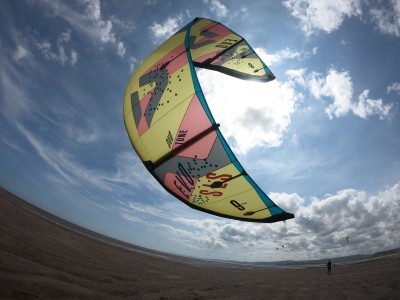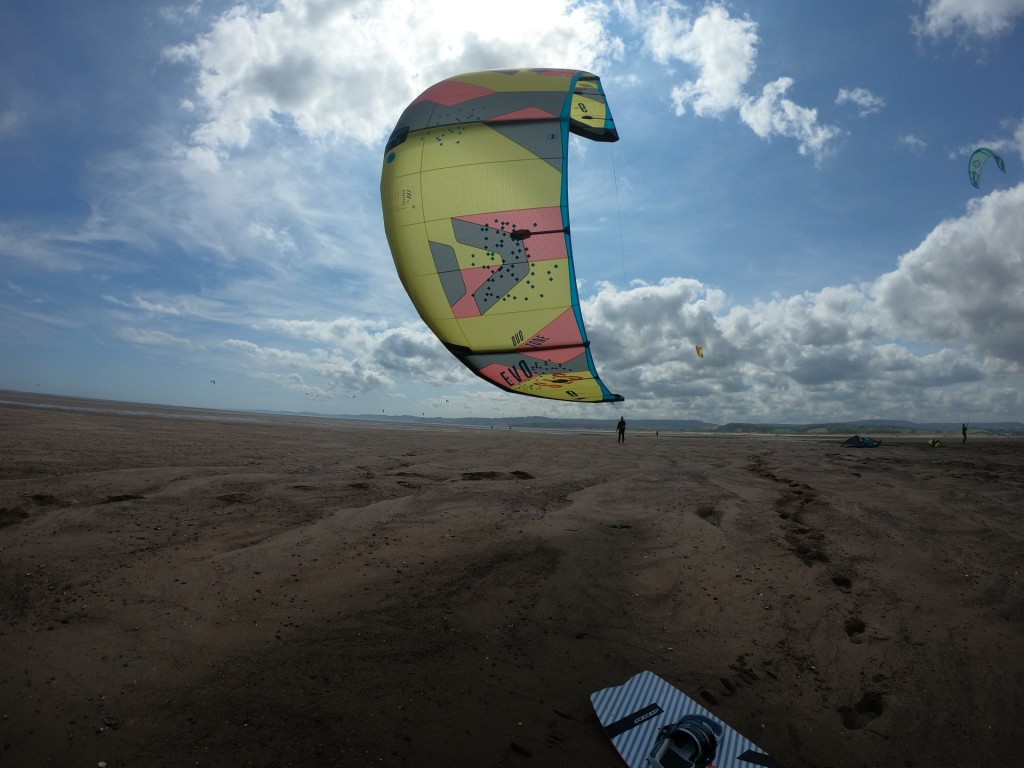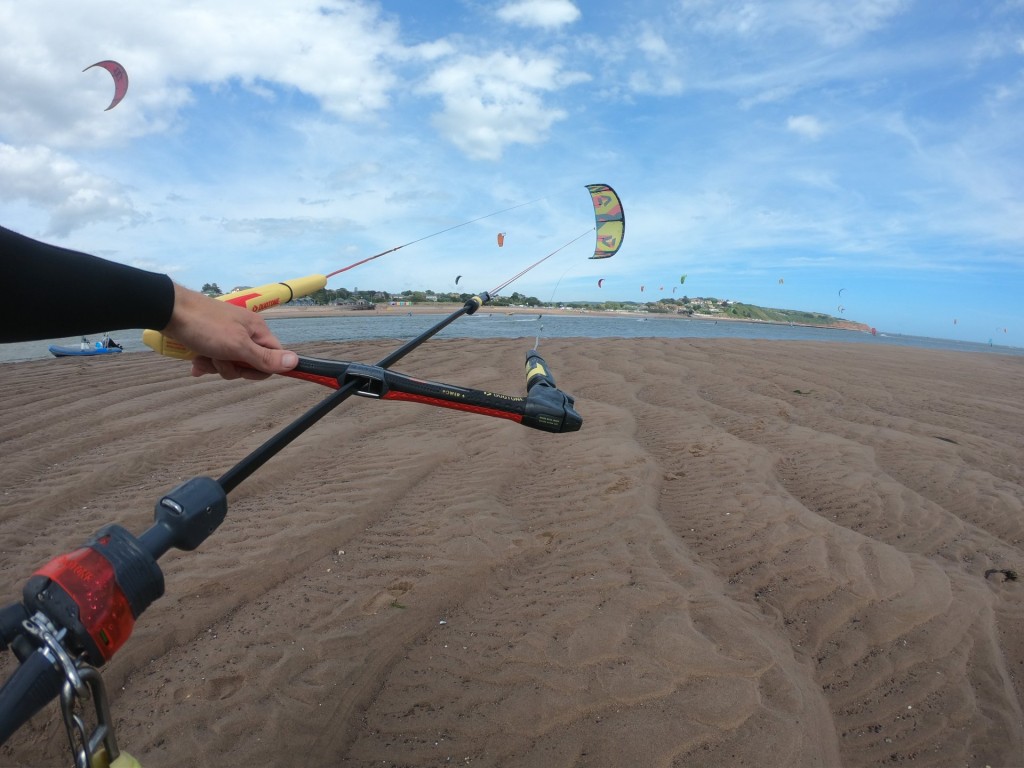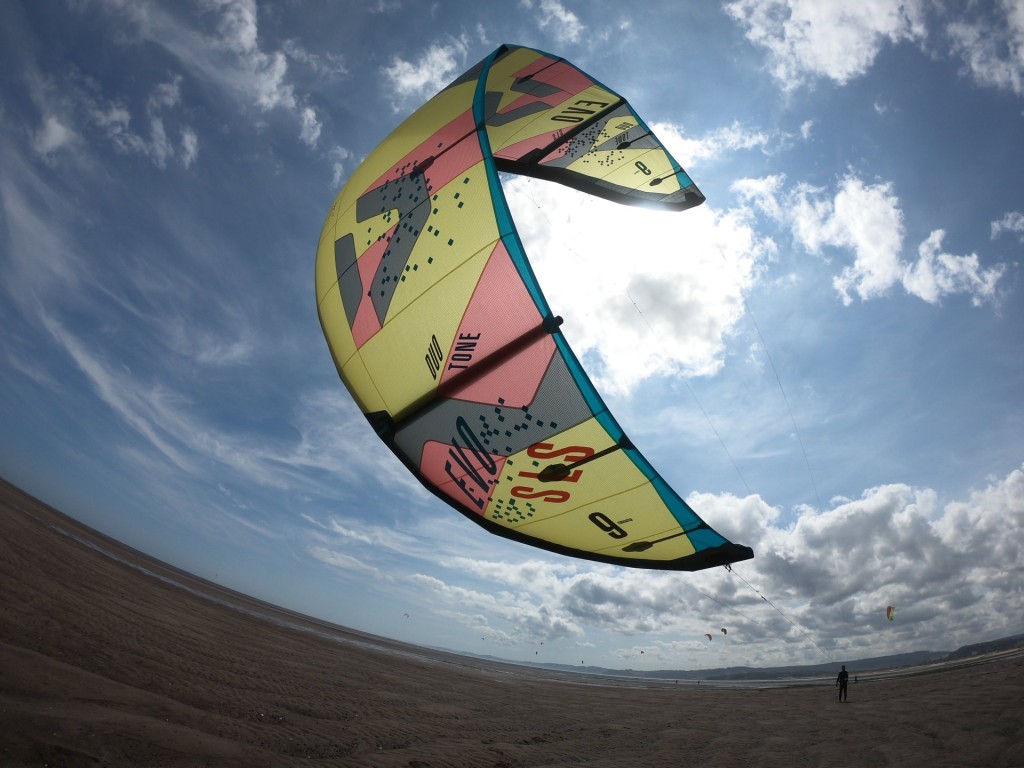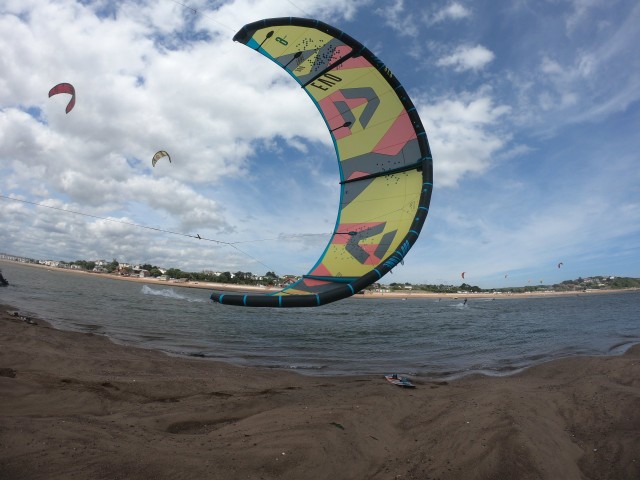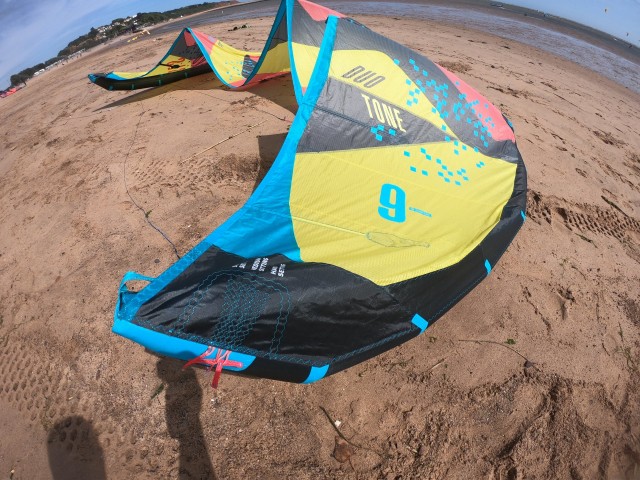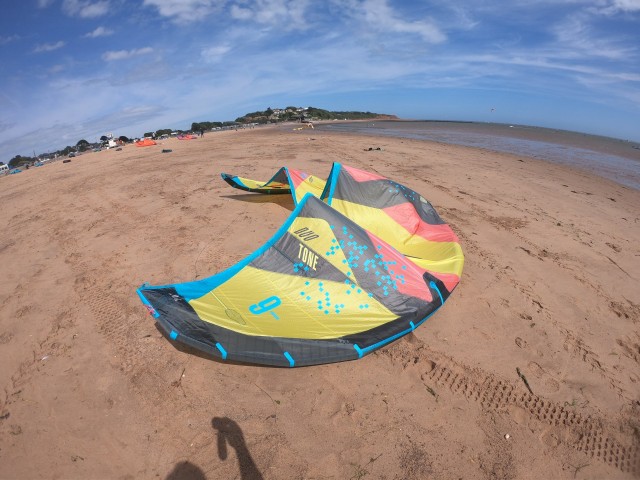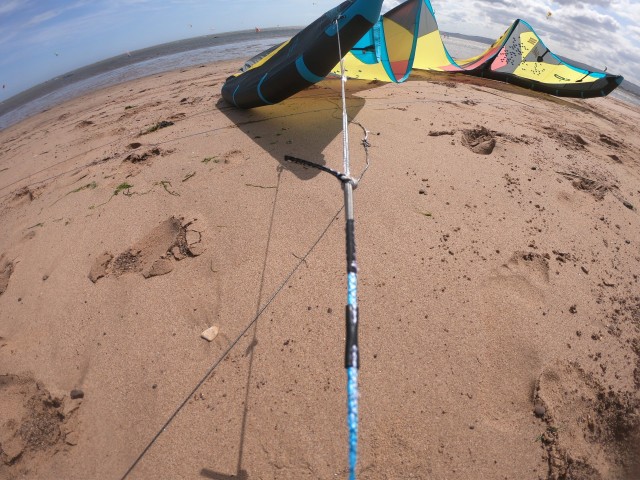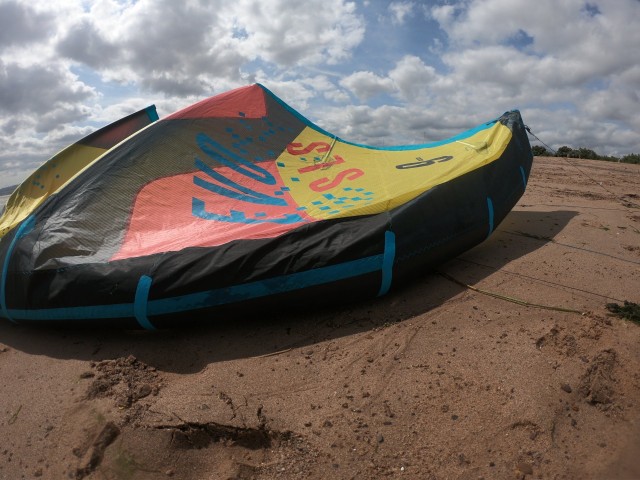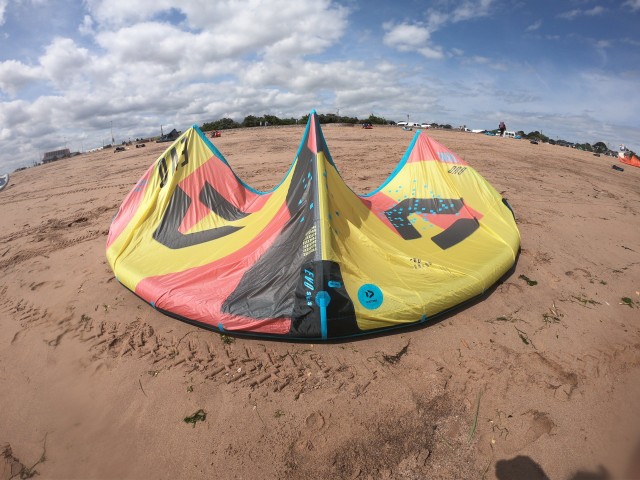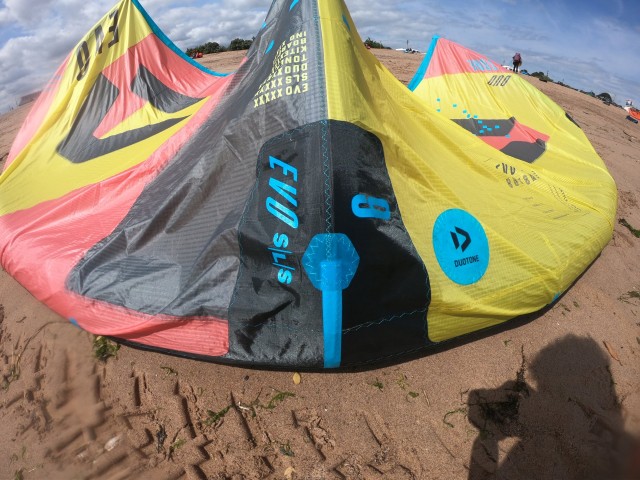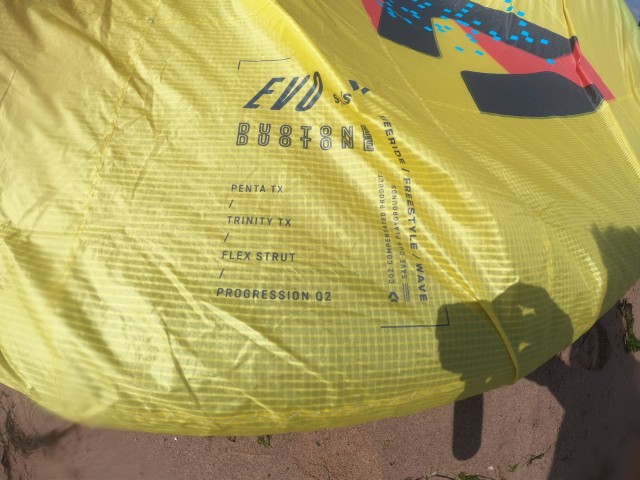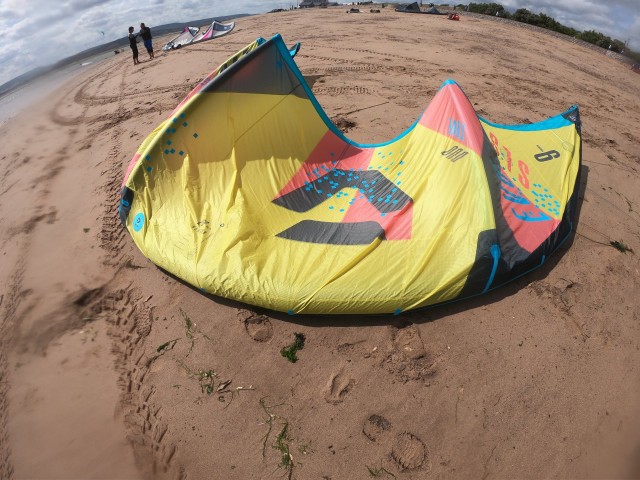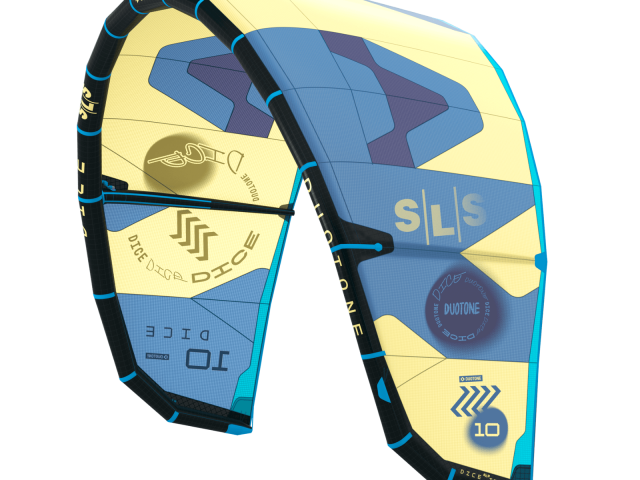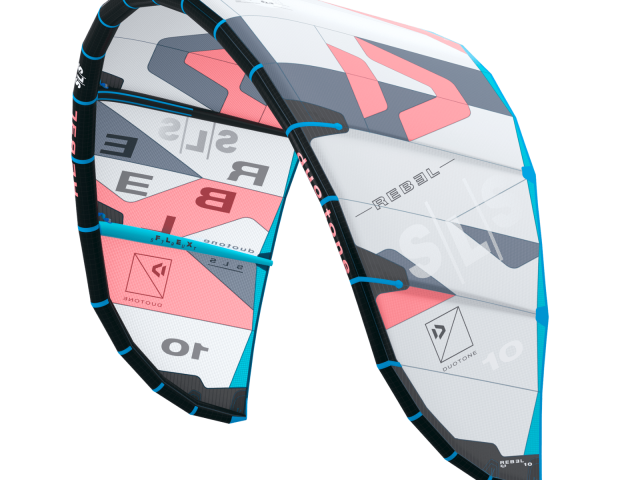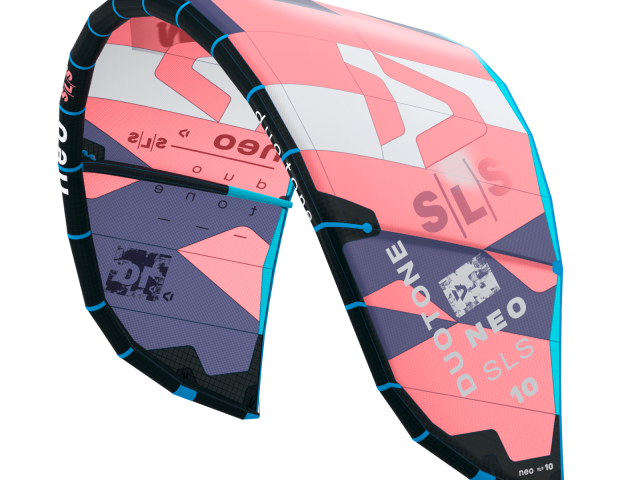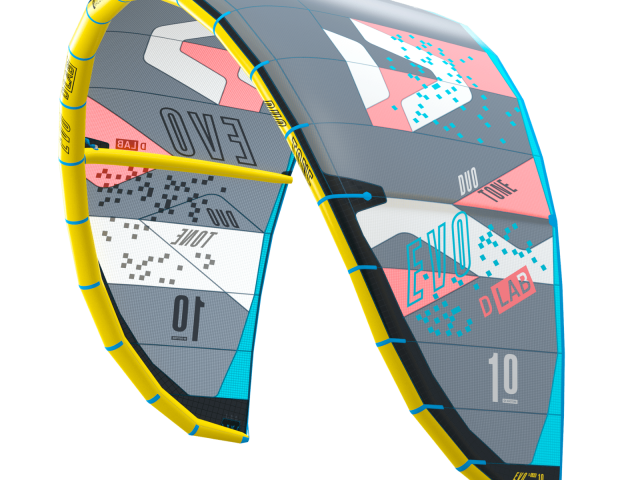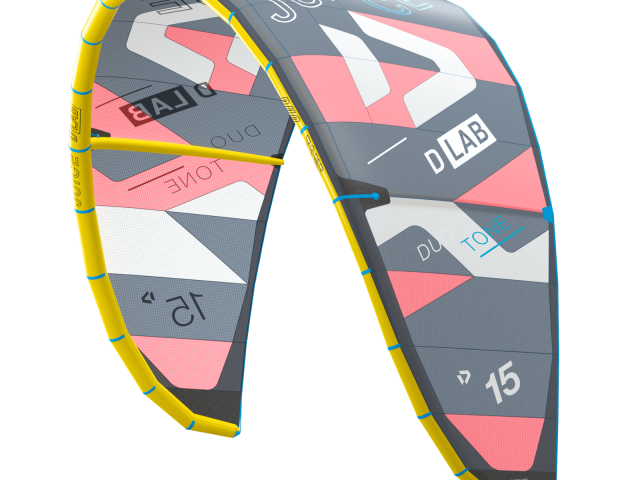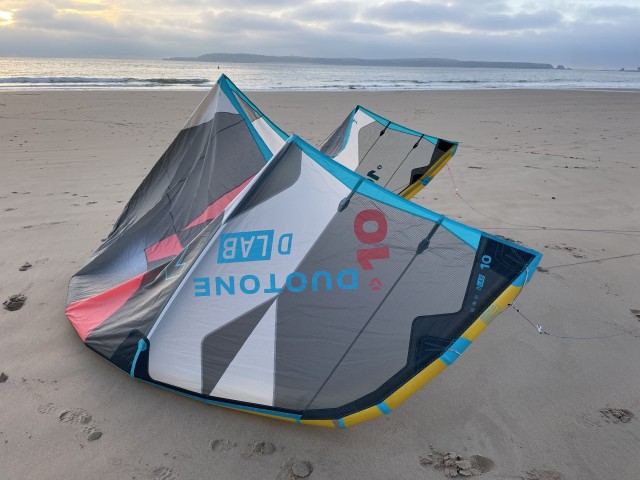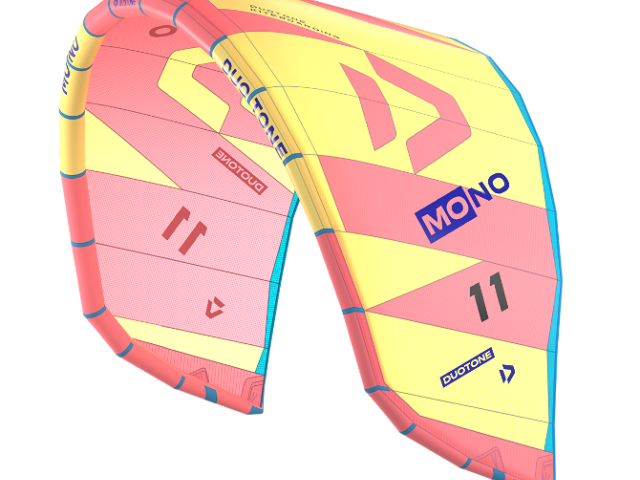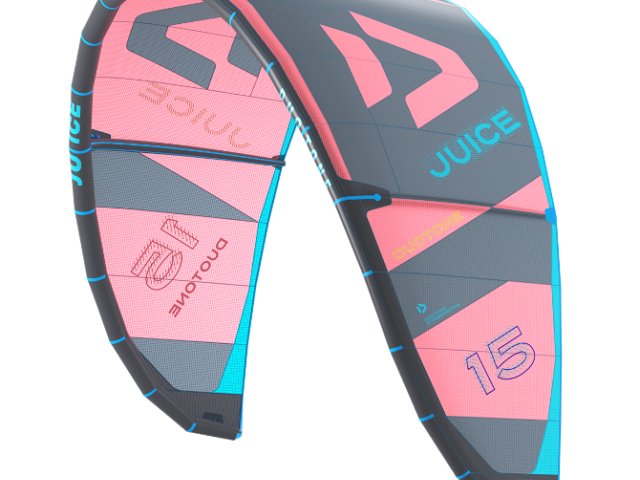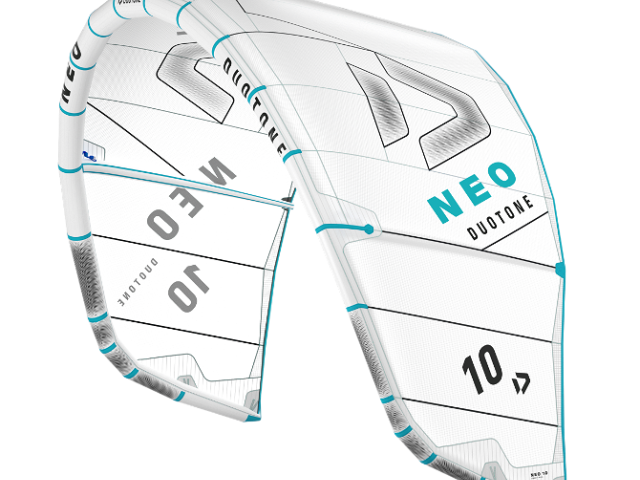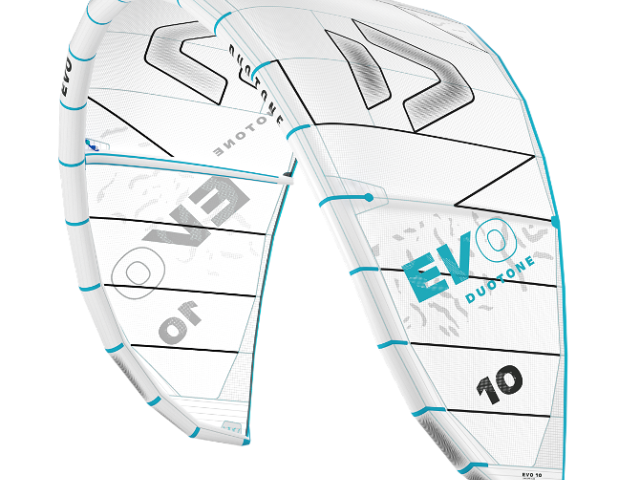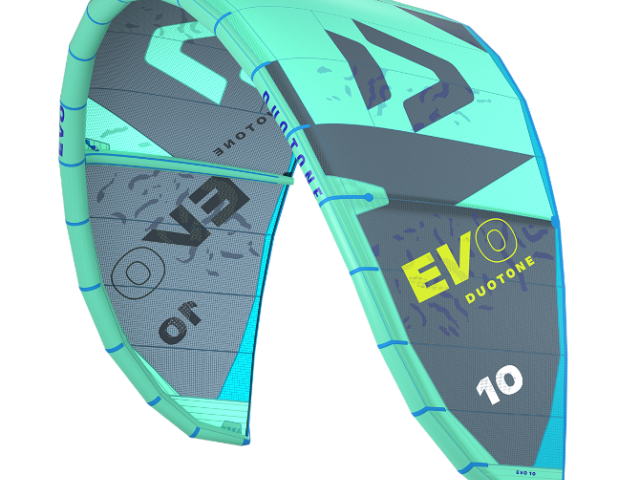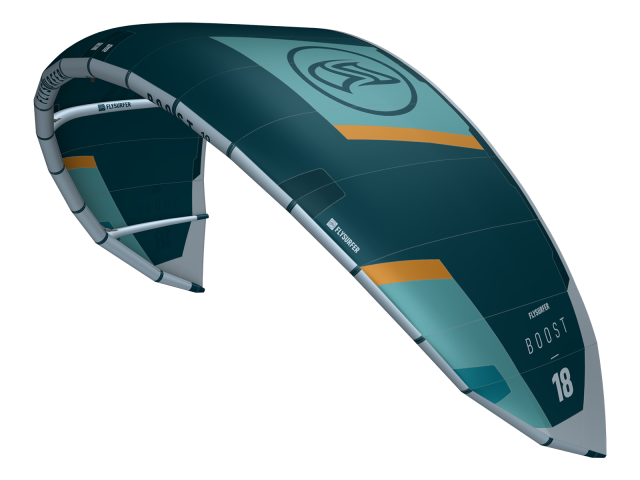At A Glance
It has been three years since the Evo got its first dose of the SLS treatment (Strong, Light, Superior). Thanks to the use of new premium materials, the performance difference was clear from the start and really enhanced Duotone's sporty 3-strut all-rounder. With the Evo family now growing even further this year to include a D/LAB edition (review coming soon!), we'll do our best to help you choose which one is right for you.
The principle difference between the Evo and the Evo SLS is the use of Duotone's Penta TX instead of traditional Dacron for the majority of the airframe of the kite (leading edge and central strut). This results in a noticeable difference in weight straight out of the bag (SLS kites are up to 15% lighter than regular models). The Penta TX is also stiffer and therefore provides a more rigid airframe. The difference in performance is obvious once you put it in the sky, but we'll get to that...
The outer struts ('Flex Struts') are intentionally excluded from the Penta TX replacement to make the steering response as dynamic as possible. The airframe remains rigid to create a stable kite that retains its profile even under load, while the softer Flex Struts allow some defined bend and twist at the wingtips to quickly and smoothly translate inputs into turning response.
The Evo SLS features multiple load distribution panels placed strategically between the leading edge and canopy, with varying depths as appropriate to spread force. This controls the kite's profile under the loads associated with overpowered riding and jumping and makes for a smoother feeling of power delivery. The trailing edge gets the same attention and is reinforced along the whole length with additional streamlined scuff bumpers at the TE tips. As we expect from Duotone kites, the Evo SLS has both Duotone’s central inflate/deflate valve as well as a wingtip dump valve, rescue handles, and minimalist, streamlined scuff protection along all leading edge seams.
Sizes: 7m, 8m, 9m, 10m, 11m, 12m, 13m
In The Air
As the Evo SLS is marketed as Duotone's sporty performance all-rounder, it was essential to get it out in a variety of conditions. A 9m all-rounder, especially one with premium lightweight materials, should do everything from 10-knot kitefoiling to 30-knot kiteloops, and the Evo SLS did not disappoint.
First of all, let us talk about the feedback through the bar because the Evo SLS really shines in this area. It has a very linear bar pressure, which increases smoothly as you pull the bar in and is best described as medium when the bar is all the way in. It is particularly impressive that they've managed to make such a smooth feeling bar throw given the enormous instantaneous depower available to you when pushing away the bar. The turning inputs are immediate, and the feedback through the bar lets you know the kite's position and current behaviour at all times. This feeling remained consistent in all conditions, whether really underpowered with minimum line tension kitefoiling with the bar trim set to max power, or overpowered on the twintip in looping conditions with a bit of trim on. Some kites lose their nice bar feel and feedback with the use of too much trim, but this is not the case with the Evo SLS.
The Evo SLS turns quickly but still maintains forward motion, resulting in driving dives, turns, and loops that deliver power smoothly. I think the tight canopy and load distribution panels may have had something to do with this. There was virtually no flutter from the trailing edge or canopy, regardless of the kite’s angle of attack or load. This generally means less turbulent airflow off the trailing edge and more forward speed, which you can definitely feel.
Like the bar feel, the turning speed and the forward speed of this kite were consistent, irrespective of the line loading, which made for a very predictable and enjoyable kite to fly (and one that all riders, including beginners, would get dialled into quickly). Its keenness to push forward, even with little line tension, made it feel eager and sporty. From a performance perspective, when riding underpowered (foiling or twintip), the kite would climb from dives quickly, allowing you to repeat the process and generate apparent wind with minimal effort. It also climbed out of loops quickly, which instilled confidence to try new tricks. The Evo is sold as a hooked in freestyle kite, not unhooked, but I put it through its paces for the sake of thoroughness. It's perfectly stable unhooked, and gets the job done when not too powered up, but doesn't deliver the same level of smooth, predictable performance as it does when hooked in.
I didn't manage to get a dedicated wave session on the Evo SLS, but I'd have no hesitation taking it into swell. This is because it has many of the key attributes of a good wave kite. It has smooth power delivery, an enormous depower range on the bar, fast turning, drift and an ability to climb even with little line tension. It might not be quite as fast through the air as a dedicated wave kite, but you don't want this in a performance all-rounder to excel in the other disciplines, and the Evo SLS gets the balance right in this regard.
Overall
The Evo SLS is a serious contender for anyone looking for a do-it-all kite. It has all of the performance you could need while being an extremely enjoyable kite to fly. It helps you get the most of its fast and lively flight characteristics by delivering power smoothly and providing excellent feedback through the bar. I came to know I could rely on it, regardless of what conditions were presented when I arrived at the beach, and it was adaptable if I decided I wanted to mix up the disciplines.
Videos
For more information visit DUOTONE
Related
By Liam Proctor


